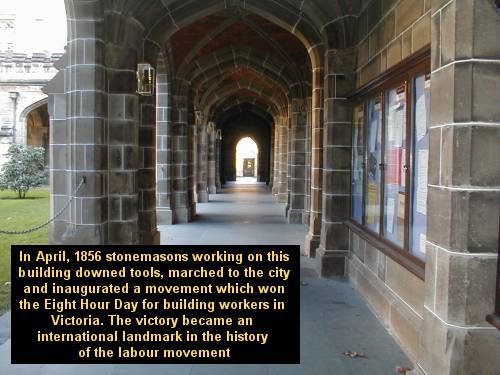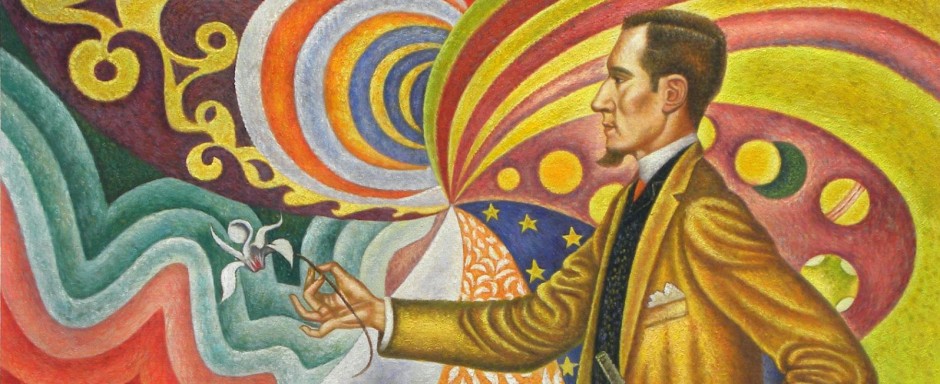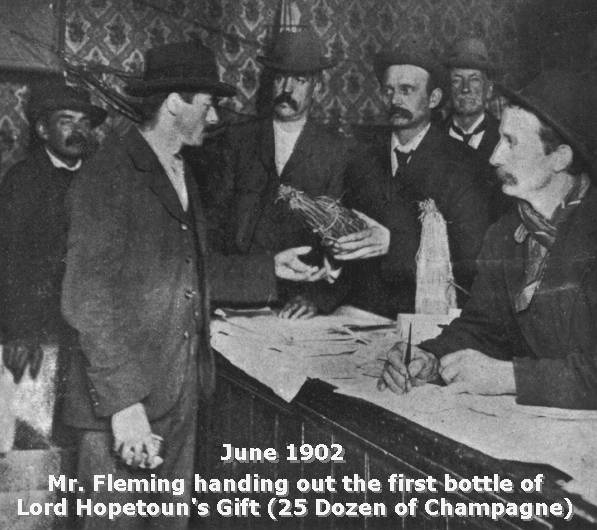- “Organisers of this afternoon’s May Day rally through the streets of Melbourne are expecting a big turnout.” ~ ABC, May 3, 2009
Coverage of May Day in Melbourne by the corporate/state media has been minimal. In the blogosphere, see : may day… pagan and political, HERSTORY = Ponderings, Passions & Politics, May 2, 2009 & … May Day on Sunday 3 May, MelbourneProtests Weblog, May 4, 2009:
The Melbourne May Day Committee held its annual march, concert and family festivities at Trades Hall on Sunday 3 May. Attendance seemed smaller than last year, to begin with at least, but still amounted to a respectable showing on the march through the city. Children were especially well catered for this year, with not only the usual rides and slides, but also a splendid miniature train to ride on the march. Most prominent was a large contingent of the Tamil community, but many others will be seen in the following images, and in this slideshow on YouTube:
April 21, 1856 : “Stonemasons lead a protest march from University of Melbourne to Parliament House, calling out workers at building sites on the way… Melbourne’s building workers, generally without loss of pay or other conditions, had gained an unprecedented widespread and sustainable victory. Their achievement established a national and international standard to which working people everywhere could aspire. It was widely celebrated as a world first and formed the basis of Australia’s reputation as a ‘workingman’s paradise’. However, only a minority of workers initially won the Eight Hour Day. Most workers, including women and children, generally worked longer hours for less pay. It was common to work twelve to sixteen hours a day.”

“In the immediate aftermath of the Eight Hour Day victory, the Victorian trade union movement began to plan for the future by organising a permanent location. They were granted land on the corner of Lygon and Victoria Streets in 1858 and, after occupying a temporary structure, started work in 1874 on the Trades’ Hall and Literary Institute of Melbourne, which still occupies this site. It was the world’s first Trades Hall building.”
“Eight Hour Day processions were held annually on April 21 and in 1879 the Victorian government declared it a public holiday. The processions became the largest public celebrations for decades, as workers marched with elaborate banners, floats and bands through Melbourne and country towns, watched by tens of thousands of people. In 1934 the Eight Hour Day was renamed Labour Day. The 1930s Depression and Second World War brought about the decline of the marches, the final occurring in Melbourne in 1951. In 1955 Moomba was introduced to replace what had begun a century earlier as a celebration of the Eight Hour Day.”
See also : Melbourne Celebrates the 150th Anniversary of its Eight Hour Day, Peter Love, Labour History, Vol.91, 2006: “The program of public events began with a formal opening ceremony in the cloisters of the Old Law Quad at the University of Melbourne where the building workers downed tools in 1856. Hosted by Glyn Davis, it was addressed by leading trade unionists and the Minister for the Arts. Descendants of the Eight Hour Day pioneers admired the restored union banner on display and listened to rousing songs from the Trade Union Choir.”
- In this Victoria, our dear land,
The first that dared be free,
To show the world what freedom meant
In new lands ‘cross the sea
– Ode to the Eight Hours’ Pioneers
Hamilton Mackinnon
April 21, 1896
May 1, 1886 : Melbourne Anarchist Club established (dissolved in 1889). Leading figures included David Andrade (1859–1928), John (J.A.) Andrews (1865–1903) and John ‘Chummy’ Fleming (1863?–1950). Andrade authored ‘The Melboume Anarchist Club Manifesto’ (see below).
May 4, 1886 : The Haymarket Riot, Chicago, Illinois. Seven police officers were killed when a bomb exploded on a busy city street during a workers’ rally as part of the US labour movement’s agitation for the 8-hour day. Eight local anarchists are framed: George Engel, Samuel Fielden, Adolph Fischer, Louis Lingg, Oscar Neebe, Albert Parsons, Michael Schwab and August Spies. Seven of the accused were condemned to death and one (Oscar Neebe) was given twenty years’ imprisonment. The death sentence of two, Samuel Fielden and Justus Schwab, was subsequently commuted by Governor Oglesby to life imprisonment, but executive clemency was extended in 1893 by Governor Altgeld to all three of those serving terms in the penitentiary. Of those condemned to execution, one (Louis Lingg) committed suicide in the county jail by exploding between his teeth a small dynamite bomb. The remaining four (Spies, Parsons, Engel and Fischer) were hanged in the county jail at Chicago on November 14, 1887.
- “The time will come when mankind will look back upon the execution of the anarchists as we of this day look back upon the burning of the witches in New England.” ~ -ex-Senator Trumball at the 1887 funeral.
May 1, 1890 : “…The first to follow the example of the Australian workers were the Americans. In 1886 they decided that May 1 should be the day of universal work stoppage. On this day 200,000 of them left their work and demanded the eight-hour day. Later, police and legal harassment prevented the workers for many years from repeating this [size] demonstration. However in 1888 they renewed their decision and decided that the next celebration would be May 1, 1890.
In the meanwhile, the workers’ movement in Europe had grown strong and animated. The most powerful expression of this movement occurred at the International Workers’ Congress in 1889. At this Congress, attended by four hundred delegates, it was decided that the eight-hour day must be the first demand. Whereupon the delegate of the French unions, the worker Lavigne from Bordeaux, moved that this demand be expressed in all countries through a universal work stoppage. The delegate of the American workers called attention to the decision of his comrades to strike on May 1, 1890, and the Congress decided on this date for the universal proletarian celebration…
The first of May demanded the introduction of the eight-hour day. But even after this goal was reached, May Day was not given up. As long as the struggle of the workers against the bourgeoisie and the ruling class continues, as long as all demands are not met, May Day will be the yearly expression of these demands. And, when better days dawn, when the working class of the world has won its deliverance then too humanity will probably celebrate May Day in honor of the bitter struggles and the many sufferings of the past.” ~ Rosa Luxemburg, ‘What Are the Origins of May Day?’ (1894).
In Melbourne, anarchists like Chummy Fleming played a leading role in early May Day celebrations/protests, organising the first in 1890. Bob James writes: “Yet another initiative for which Fleming is credited is the first collection in Victoria for the relief of the striking London dockers, eleven pounds. The movement spread and it is a matter of history how many thousands of pounds were sent from Australia.
One of the most surprising pieces of evidence for Fleming having a wider view and, most importantly, a recognition of the part played by individuals in mass reform, is his concentration in MAC (Melbourne Anarchist Club) debates on women’s rights and the need for sexual freedom. Not a great paper giver, he is first recorded leading a debate in September, 1886 and in October he spoke for ‘Free Love’. The debate had been adjourned from the previous week so that ‘ladies’ could participate in what had proved to be a ‘stimulating discussion’. On the Sunday preceding 27 February, 1887 he spoke on ‘The Subjection of Women’, and continuing his interest, on ‘Marriage, Prostitution and the Whitechapel Murders’ on 15 December, 1888.
The as-yet-unsighted ‘Liberty’ pamphlet ‘Free Love – Explained and Defended’ issued by the Club without the author’s name in 1886 or 1887, may therefore be Fleming’s, or a resume of the discussion in September-October, 1886, but is most likely to be David Andrade’s as all the others but one are.”
See also : Hey Ladies! // Terence Kissack : ‘Free Comrades’ (March 8, 2009).
As a bootmaker, ‘Chummy’ campaigned for better work conditions and the right to organize. He was elected as delegate of the Victorian Operative Bootmakers’ Union to the Trades Hall Council in 1890. Next year he was president both of the bootmakers’ union and of the Fitzroy Progressive Political League. His union activities were important to him but it was only in the early 1890s that he was not considered an outsider by the dominant protectionist group of union officials. In 1890 he helped to organize the first Victorian May Day meeting and in 1892 chaired the first public May Day meeting. For his part in the growing militancy of the unemployed, Fleming was beaten up by paid thugs and isolated from mainstream politics. He continued to support co-operatives and the village settlement movement.
Particularly after the death of Andrews in 1903, Fleming publicly emphasized his anarchism. No theoretician, he left few written statements, but corresponded with overseas journals until late in life. In 1904 he was expelled from the T.H.C. for his attacks on Labor politicians. He was active in the anti-conscription movement during World War I but afterwards his public activities declined.
Fleming continued to march on May Day and to address the public from his Yarra Bank stand. A gentle man, affectionately regarded by later generations, he looked forward to a millenium in which happiness and brotherly love would prevail. He suffered from a duodenal ulcer before his death some time on 25 or 26 January 1950 at his home in Carlton, where he had carried on his own bootmaking business for many years. He was cremated.
“A representative of The Age asked Mr Fleming why the wine had not been sold and the money distributed. His reply was perhaps characteristic. He said: “We are tired of the inequalities among the people. The rich drink champagne and the poor small beer. Besides, it would have been a breach of faith to his Lordship to have sold the wine”. When The Age reporter pointed to the drunken mob outside, and asked if that was the equality he meant, Mr Fleming could only say that such a thing as the distribution of champagne had never occurred before in Australia, and that champagne was not intended only for dainty stomachs. On Tuesday Mr Fleming was the secretary of the unemployed. Yesterday he was seeking by beer and champagne to create the effervescent equality of the Socialist.” ~ The Age, June 26, 1902.
When May Day celebrations were recommenced in 1928, Chummy, although not part of the official organising committee, led the May Day March in Melbourne until his death. He normally started marching 30 minutes before the official march and waited for the main march to catch up with him.
May 1, 2000 : In anticipation of and in order to publicise upcoming demonstrations (S11) against the Asia-Pacific meeting of the World Economic Forum, anarchists and others organise a rally and march. See : An Activists Diary: The Battle Of Melbourne, Monday, 18 September 2000, a compilation of postings from s11AotearoaNZ@egroups.com.
May 1, 2001 : “For the first time in more than 50 years, thousands of workers, students and community activists marched and protested against capitalism and corporate exploitation.” One of the organising groups for this event, which included a ‘blockade’ (sic) of the stock exchange and a tour of corporate Melbourne, was the leftist ‘M1 Alliance’. The ‘M1 Alliance’ was launched as a continuance of the ‘S11 Alliance’, one of the two main organising bodies for the S11 protests (the other being S11-AWOL: Autonomous Web of Liberation).
In response to the influx of young radicals and in pig ignorance of its history, Peter Lewis wrote a superb editorial on ‘The Hijacking of May Day’ (Workers Online, No.134, May 3, 2002). Peter is now working as a Director for PR firm Essential Media Communications. On EMC, see : ‘Iron fist of irony’, Elisabeth Wynhausen, The Australian, May 24, 2008: “Lewis, the one director based in Sydney, has worked as a journalist on Sydney’s The Daily Telegraph and a press officer for a [former] NSW government minister. When Michael Costa, then secretary of the NSW Labor Council, hired him as his media officer – a consultant position he holds to this day – Lewis set up his own company, Rivet Media in the Labor Council offices. The Labor Council has been rebadged Unions NSW and Costa is now [sic] a senior minister in the Iemma Government. Lewis, who is said to be close to Costa’s successor, Unions NSW secretary John Robertson, has the EMC office in the building next door to Trades Hall…”
Unlike Chummy Fleming, who died in poverty after a lifetime of dedication to the labour movement, it seems unlikely Peter Lewis will depart this wonderful world penniless.
NB. Local anarchists have been commemorating May Day on May 1 each year for the last 30–40 years, meeting @ the 8 Hour Monument (opposite Trades Hall) at midday.
Random hit : Interview: Kareem Rizk, Jenn Ski, April 26, 2009.
…At the Bosses’ Convenience
- ‘The Melboume Anarchist Club Manifesto’
D.A. Andrade, May, 1886.
‘To the People of Australasia
The Melbourne Anarchist Club extends its greetings to the liberty loving citizens of these young colonies and appeals to them to assist its members in their efforts to remove those public sentiments and public institutions, which have been transplanted here from the northern hemispheres, retard social progress and happiness; and to substitute in their place the enabling principles of Liberty, Equality and Fraternity!
The objects of the Melbourne Anarchist Club are:
1. To foster public interest in the great social questions of the day, by promoting inquiry in every possible way; to promote free public discussions of all social questions; and to circulate and publish literature, throwing light upon existing evils of society, and the methods necessary for their removal.
2. To foster and extend the principles of Self-Reliance, Self-Help and a spirit of Independence amongst the people.
3. To uphold and maintain the principles of Liberty, Equality and Fraternity. By Liberty we mean ‘the equal liberty of each, limited alone by the equal liberty of all.’ By Equality we mean ‘the equality of opportunity for each individual.’ And by Fraternity we mean ‘that principle which denies national and class distinctions, asserts the brotherhood of Man, and says ‘The World is my country.’
4. To advocate, and seek to achieve, the abolition of all monopolies and despotisms which destroy the freedom of the individual and which thereby check social progress and prosperity.
5. To expose and oppose that colossal swindle, government, and to advocate abstention from voting, resistance to taxation, and private co-operation or individual action.
6. To foster mutual trust and fraternity amongst the working people of all ranks, and to turn their attention to the common foes: the priests and the politicians, and their co-adjutors, attacking principles rather than individuals.
7. To unite the co-operation of all who have realised the innate evils of our governing institutions, and desire their speedy dissolution for the general benefit of humanity.
8. To promote the formation of voluntary institutions similar to the Melbourne Anarchist Club throughout Victoria and the neighbouring colonies, and, with their consent, to eventually unite with them forming the Australasian Association of Anarchists.’
See also : Aims & Principles of the Melbourne Anarchist Club (MAC) (Ratified at the MAC Annual General Meeting, October 28, 2007).


There was train rides? Damn…
Sydney was fairly boring, though i can’t say i did anything much to remedy it.
It was the usual assortment of marxists selling papers, sending out their new young recruits to convert any young people they see (as one socialist alternative kid tried hopelessly with my partner and i) and avoiding eye contact with old comrades they’ve now splintered from – particularly funny was the trotskyist platform vs. sparts.
We also had the pleasure of hearing talks by members of revolutionary groups like the NSW Labor Party!
Oh well.
The workers’ movement has always provided a fine platform for middle class careerists eh.